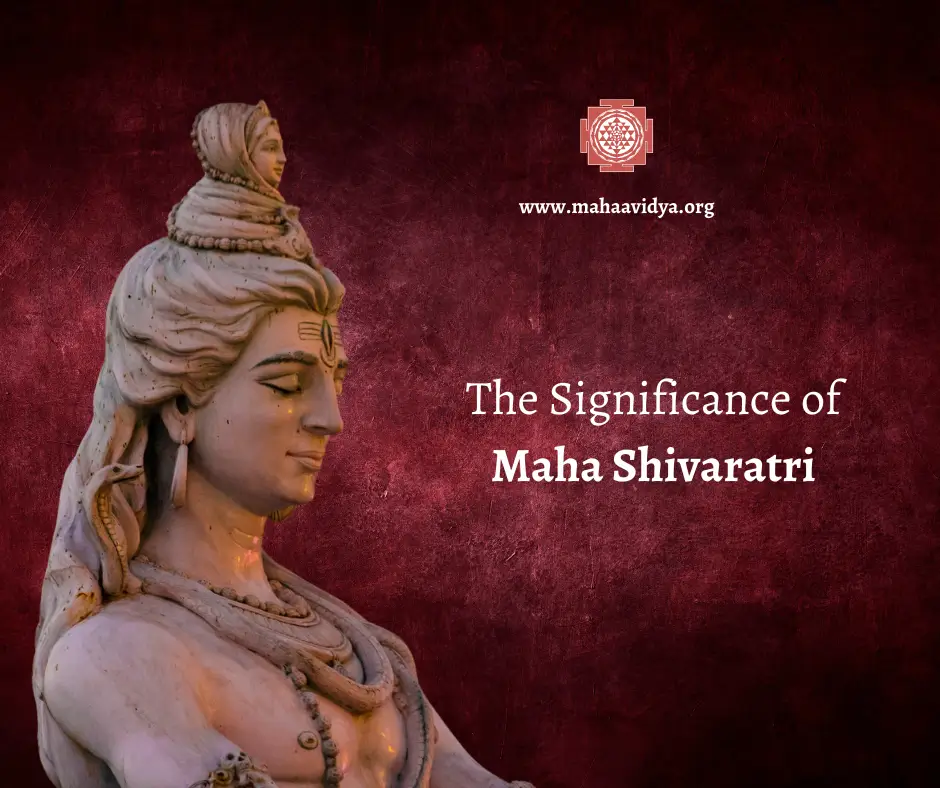The Significance of Maha Shivaratri
In the mystical dance of time, this year’s Maha Shivaratri is revealed to us on March 8th, when the ordinary meets the infinite. This is not merely a date but a profound moment to commune with Mahakala, the embodiment of time. For most of us, time might present itself as a mere succession of seconds into minutes, days into years, a linear progression marked by the ticking of a clock. Yet, if one steps beyond the ordinary to transcend the mundane, to halt the ceaseless march of hours, a different dimension unveils itself.
On this sacred occasion, if one immerses in Upasana, letting each tick of the cosmic clock resonate with conscious awareness, and observes Jagarana, the sacred vigil of the night, the alchemy of transformation begins. This is the night when the veils of illusion thin, guiding the soul from the shadowy realms of ignorance to the luminescent shores of enlightenment — a journey from darkness to light, from ignorance to wisdom.
Kaala, a term that signifies both time and death, is the silent weaver of destinies, the unseen force that brings all to fruition only to dissolve it back into nothingness. Kaala shows us that everything has its moment before it fades away. Kaala quietly shapes our destinies, a hidden power that brings everything into being only to fade it into oblivion. But within this cycle, there’s a deep truth and a chance to find absolute freedom (moksha). Lord Shiva is Mahakaala and Maha Mrityunjaya, embodying the vastness of time and the conqueror of death, respectively.
At midnight, when the world is covered in darkness, a sacred event known as Lingodbhava occurs: the formless (Arupa) manifests as “Shiva Linga” (Rupa). This moment marks a profound transformation from darkness to light and ignorance to wisdom, symbolising the transition from the unknown to enlightenment.
Maha Shivaratri is thus not just a night of worship, but a passage into the heart of the divine, a journey into the innermost sanctum of one’s being, where every end is a new beginning, and every darkness is a precursor to light.
Significance of Upavasa and Jagarana
“Upavasa,” often translated as fasting, is derived from Sanskrit, where ‘Upa’ means ‘near’ and ‘Vasa’ means ‘to stay’. Therefore, Upavasa is not merely about abstaining from food; it is a deeper spiritual practice meant to bring one closer to God. In the context of Maha Shivaratri, observing Upavasa signifies dedicating the day to being close to Lord Shiva and engaging in practices that enhance spiritual awareness and purity, thereby facilitating a more immediate divine connection.
Jagarana, the practice of staying awake through the night, carries significant symbolic meaning in the spiritual realm. It is not just about physical wakefulness but represents vigilance in one’s spiritual journey. By remaining awake, devotees symbolically ward off the darkness of ignorance and strive towards the light of knowledge and truth. This act of vigilance is an integral part of Maha Shivaratri, reflecting the commitment to transcend worldly distractions and focus on the spiritual path, seeking enlightenment and closeness to the divine essence of Lord Shiva.
How to Celebrate Shivaratri
On the auspicious day of Maha Shivaratri, there are simple yet profound rituals that everyone can perform to honour Lord Shiva and seek his blessings. Here’s a guide to these rituals that can enhance your spiritual journey on this holy day:
- Shiva Panchakshari Mantra Japa – “Om Namah Shivaya”: This powerful mantra is a universal call to the divine and resonates with the vibrational energy of Lord Shiva. It does not require formal initiation (deeksha) and can be recited by anyone. Chant this mantra with devotion and concentration to invoke Shiva’s presence and blessings.
- Offering Bilva Patra or Flowers: The Bilva leaf is very dear to Lord Shiva, and offering it to the Shiva Linga is highly auspicious. If Bilva leaves are not available, you can offer fresh flowers. This act of offering symbolises purification and surrender to the divine.
- Pouring Shuddha Jala (Pure Water) on the Shiva Linga: If performing the elaborate Rudrabhishekam is not feasible, you can pour pure water over the Shiva Linga while reciting the Shiva Panchakshari mantra. This ritual represents the cleansing of the soul and the removal of impurities.
- Reciting the Shiva Mahimna (Mahima) Stotram: The Shiva Mahimna Stotra is a profound hymn renowned for its spiritual potency and revered for its ability to clear Prarabdha Karmas, the past actions that shape our present life. Reciting this stotra with deep devotion purifies the soul, dissolves negative karmas, and accelerates one’s spiritual journey. Prepare by reading the stotram several times before Shivaratri and then reciting it thrice on the day to maximise its spiritual benefits.
- Dietary Considerations: Consuming liquid food like milk or juice during the day is an acceptable alternative for those who cannot observe a strict fast for health reasons. After Sunset, you can eat fruits offered to Lord Shiva.
- Observing Pradosha Kala: This period, 90 minutes before and after Sunset, is especially auspicious. It is a time for deep meditation, chanting, and performing Japa (repetitive mantra chanting). Engaging in spiritual practices during Pradosha Kala amplifies the benefits and brings you closer to the divine.
Embrace this profound opportunity presented by Maha Shivaratri to transform your lives. This sacred night offers a unique chance to deepen your spiritual practice, reflect on your inner self, and seek a closer connection with the divine. Use this time for introspection, purification, and renewal. Let the rituals and observances be a guiding light towards personal growth and spiritual enlightenment.
Download Shiva Mahimna Stotra (available in English, Devanagari and few Indian scripts): https://vignanam.org/devanagari/shiva-mahimna-stotram.html




